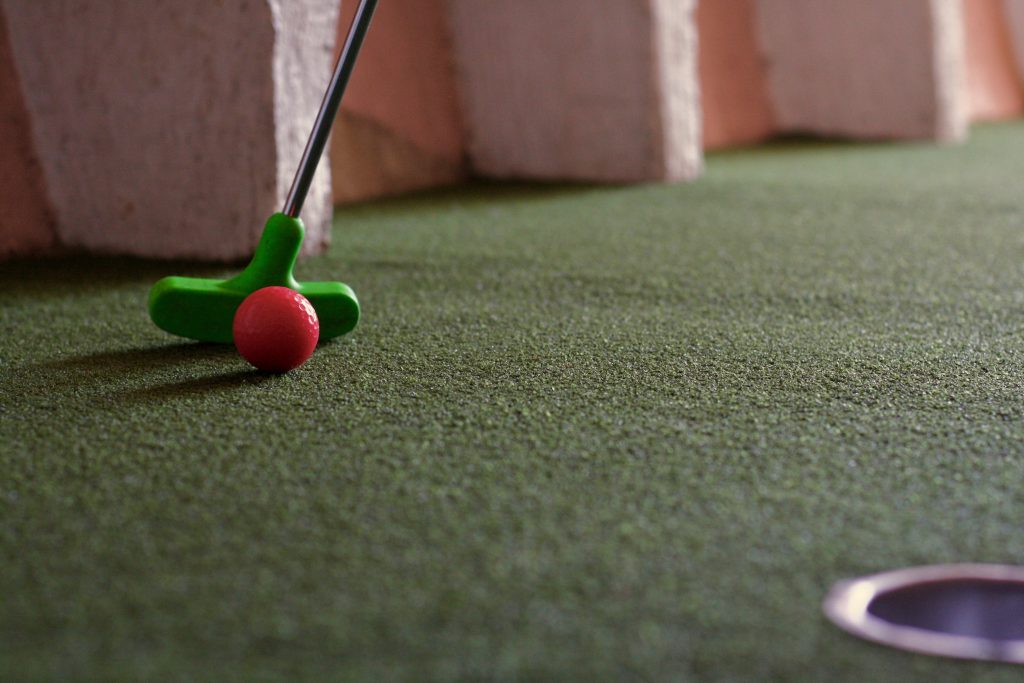At Rainbow Skateland, we have more than just roller skating! We have a fun mini golf course! Do you know the history of mini golf? Keep reading to find out!
Mini golf, also known as miniature golf or putt-putt, is a popular recreational activity that involves playing a smaller version of traditional golf on specially designed courses. While the exact origins of mini golf are somewhat unclear, the game’s history can be traced back to the late 19th century.

Here is a small history of mini golf:
Origins In The United Kingdom
The concept of miniature golf is believed to have originated in the United Kingdom during the late 19th century. It is said that the Ladies’ Putting Club of St. Andrews in Scotland was one of the earliest groups to engage in putting competitions on a small scale. The first known documented form of mini golf was a course called the “Himalayas,” which was built in 1867 at the St. Andrews Ladies’ Putting Club.
The United States
Mini golf gained popularity in the United States during the early 20th century. In 1916, James Barber of North Carolina created the Thistle Dhu (Gaelic for “This’ll Do”) course, which is often considered the first mini golf course in the country. It featured artificial greens, obstacles, and creative hole designs, setting the stage for the development of more elaborate courses.
Boom In The 1920s
The 1920s marked a significant period for mini golf, as it experienced a surge in popularity across the United States. This was due, in part, to the economic prosperity of the Roaring Twenties and the accessibility of the game to a wider audience. Mini golf courses began to pop up in various locations, such as amusement parks, boardwalks, and recreational areas. The courses often featured whimsical themes, such as castles, windmills, and other imaginative obstacles.
The Great Depression And World War II
The Great Depression and World War II impacted the growth of mini golf, as economic hardships and resource limitations affected the construction and maintenance of courses. However, mini golf continued to be played on existing courses, and some new ones were built during this time.
Post-War Resurgence
Following World War II, mini golf experienced a resurgence in popularity. Returning soldiers sought recreational activities, and mini golf provided an affordable and enjoyable option for families. Courses became more elaborate, with detailed landscaping, water features, and challenging obstacles.
Modern Mini Golf
Mini golf continued to evolve throughout the latter half of the 20th century and into the 21st century. Advances in technology and course design allowed for more interactive and immersive experiences. Indoor courses, often found in entertainment centers and family-friendly venues, gained popularity. In recent years, some mini golf courses have incorporated themes from pop- culture, such as movies, sports, or video games, to appeal to a wider audience.

Today, mini golf remains a beloved game enjoyed by people of all ages around the world. It has even become a competitive sport, with organized tournaments and professional players showcasing their skills. The game continues to evolve, with new course designs, creative obstacles, and innovative approaches to the game. We’d love to see you try out our course here at Rainbow Skateland. Check out our hours and stop in soon!
Leave a Reply